Methodology and Literature Review
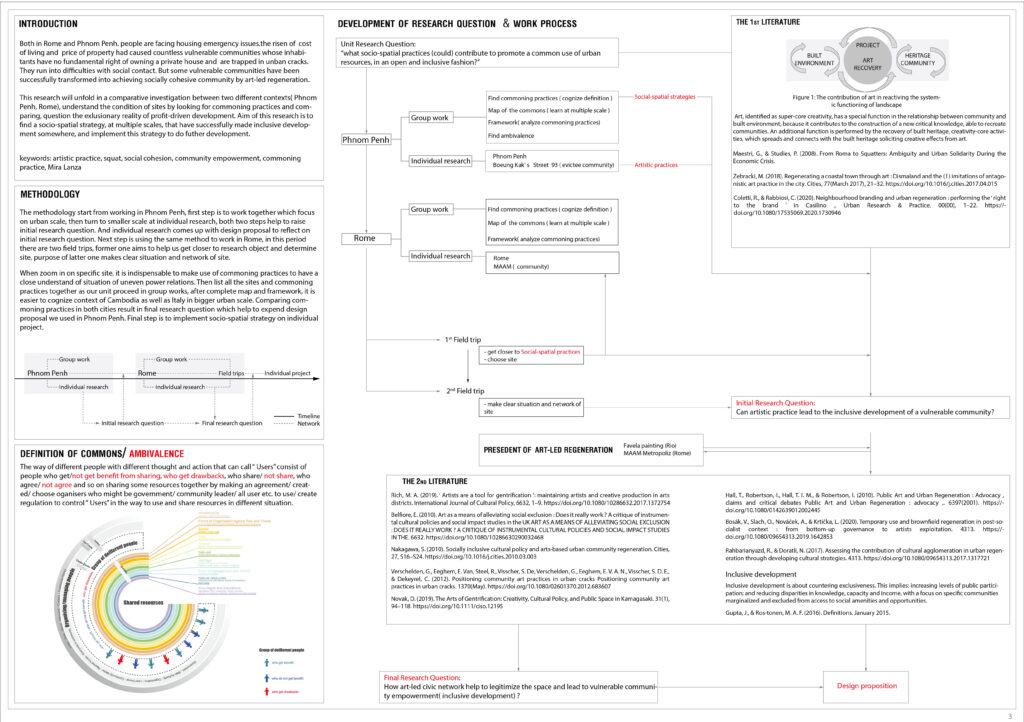
Project Statement
Camps have been defined as ‘durable socio-spatial formations that displace and confine undesirable populations, suspending them in a distinct spatial, legal and temporal condition’ (Picker and Pasquetti 2015, p. 681). Institutional camps consist in a form of socio-spatial seclusion that is officially created and managed by governmental agencies in alleged emergency situations, and which forcibly segregate (often ethnically) stigmatized subjects for a protracted period of time. In this unit, I utilize commons as a tool to investigate the
extent to which commons live (or survive) outside urban capitalism and neoliberal ideology, and question how commons might configure as an alternative to the exclusionary patterns of the current, profit-driven, urban transformation. The research context includes informal settlement, institutional camps and squat in both Phnom Penh and Rome.
Site Analysis and Stakeholder Analysis
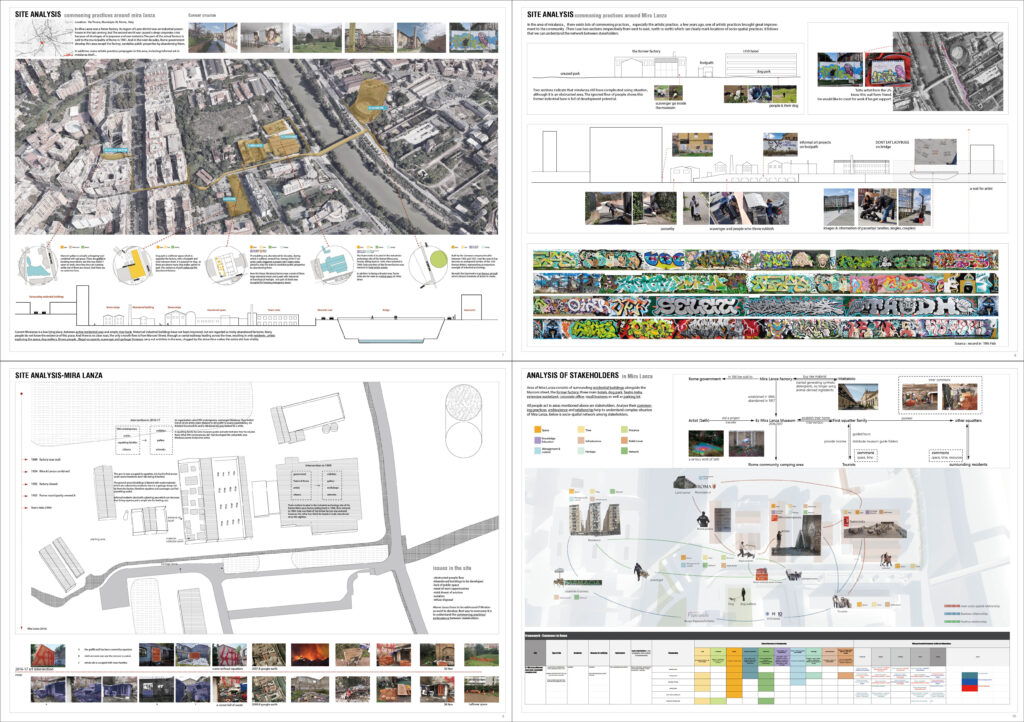
Design Proposition
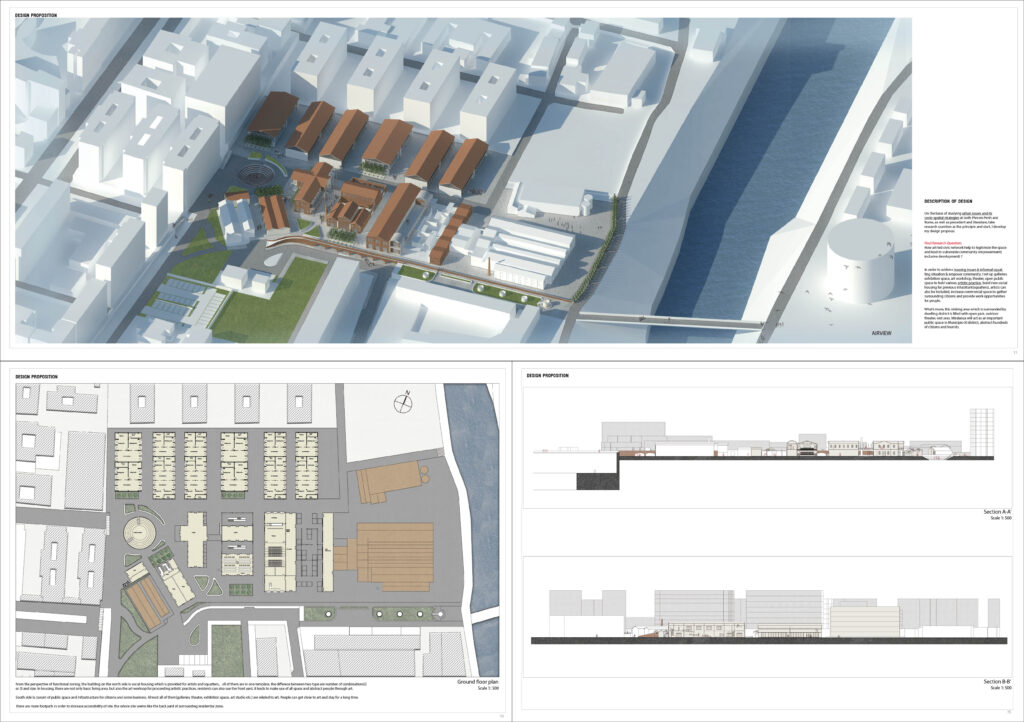
Both in Rome and Phnom Penh, people are facing housing emergency issues. The risen of cost of living and price of property had caused countless vulnerable communities whose inhabitants have no fundamental right of owning a private house and are trapped in urban cracks. They run into difficulties with social contact. But some vulnerable communities have been successfully transformed into achieving a socially cohesive community by art-led regeneration.
This research will unfold in a comparative investigation between two different contexts( Phnom Penh, Rome), understand the condition of sites by looking for commoning practices, and comparing, question the exclusionary reality of profit-driven development. Aim of this research is to find a socio-spatial strategy, at multiple scales, that have successfully made inclusive development somewhere, and implement this strategy to do further development.
Finally, art-led civic network , which have worked successfully in many cases, are chosen as a soco-spatial strategy to empower Miralanza. Artistic practices happen on site are base and beginning of its development.
Tectonic Analysis
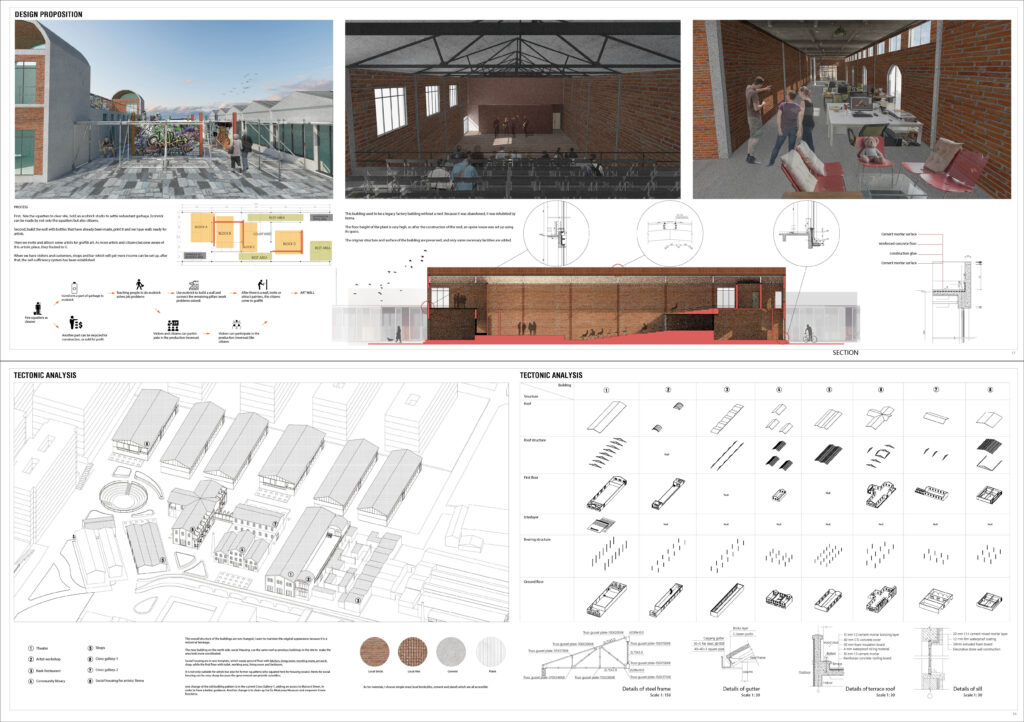
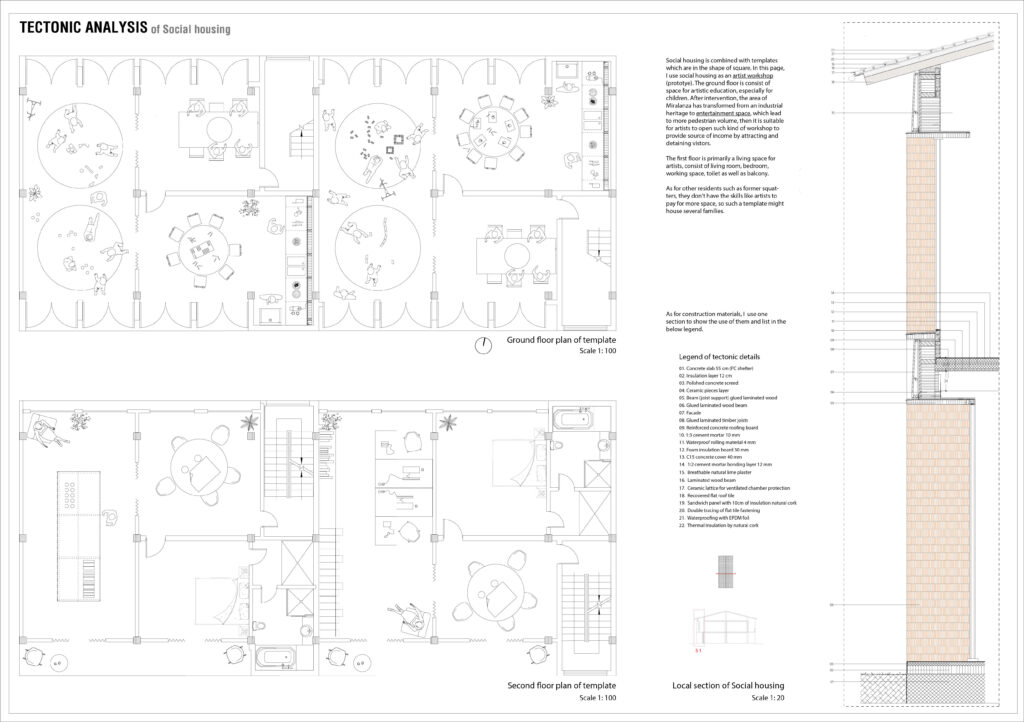
Personal Reflection
After studying in this module, I acknowledge that research is as important as design, there are lots of exploration before the actual design begins, such as background, case study, precedent, literature review, etc. As for what I have learned from unit D, the most rewarding part is realizing the significance of stakeholders, our priority is not to satisfy our thoughts, but to address their issues or to maintain their previous condition. The second one is although the national conditions of each country are different, in some cases, they are facing the same architectural dilemma, so we can compare and figure them out in a similar way.
